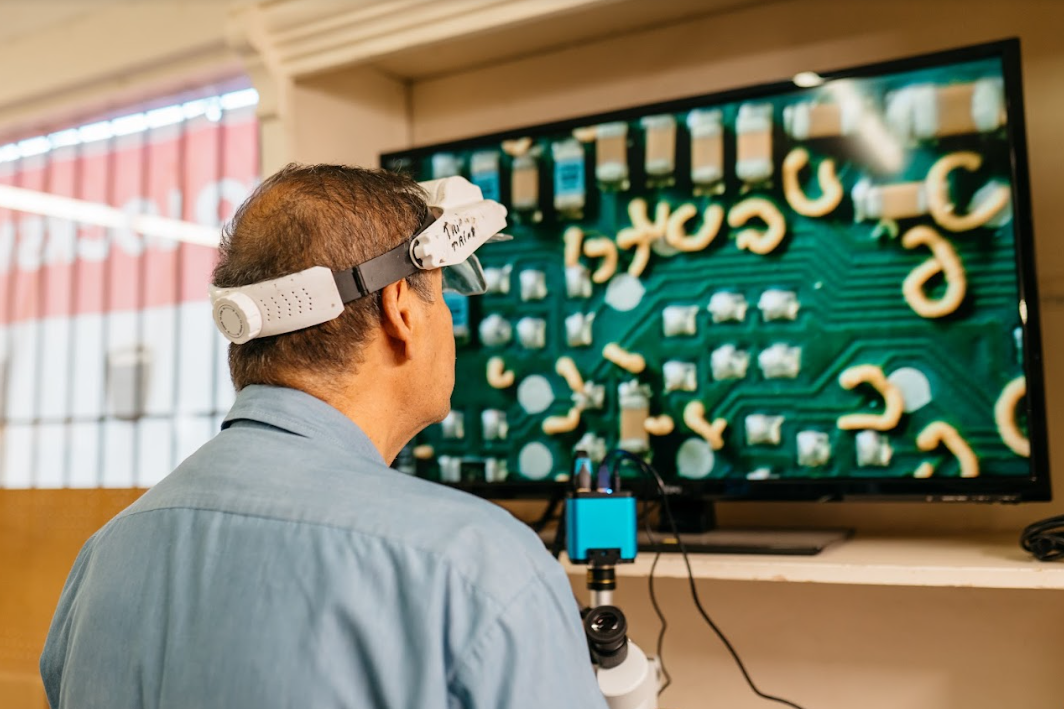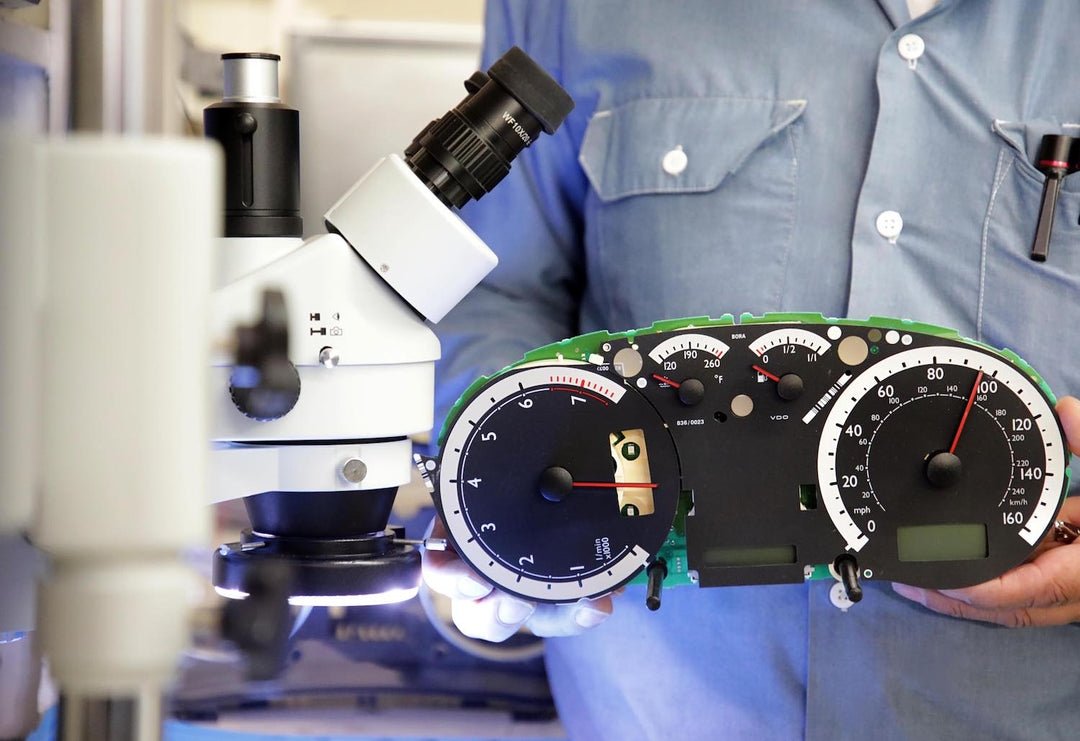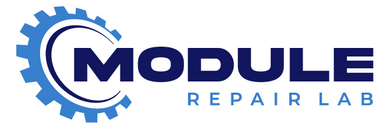Paccar MX-13 & MX-11 ECM Repair for Kenworth & Peterbilt
A failed Paccar MX-13 or MX-11 ECM can shut down your entire operation. When a Kenworth or Peterbilt won’t start, drops into derate, or loses communication with your scan tool, the problem often points back to the engine control module. A new ECM is expensive, hard to source, and often requires dealer programming. That’s why our Paccar ECM repair service is designed to help you get your truck running again without the cost and hassle of a replacement.
Module Repair Lab specializes in board-level diagnostics and repair ECM services for MX-series engines. This service restores your original ECM — meaning you typically keep your calibration, your parameters, and your engine’s existing configuration. Our process is built to save drivers and fleets time, money, and unnecessary downtime.
This is a mail-in repair service. You send your ECM to us, we diagnose and repair it when possible, and we return the same unit to you. If the ECM has additional issues or cannot be repaired, we contact you with details before moving forward.
When a Paccar MX ECM Is Failing, You’ll Often See These Symptoms
MX-13 and MX-11 engines rely heavily on the ECM for fuel delivery, timing control, emissions management, turbo behavior, and communication with the truck’s other control modules. When the ECM starts failing, problems show up quickly — and often look like unrelated issues until a technician digs deeper.
Common signs your ECM may be at the root of the issue include:
- Crank–no-start or intermittent start: The truck cranks normally but won’t fire, or only starts after sitting or cooling down.
- No communication: Your scan tool cannot connect to the engine module, even when power and grounds appear correct at the connector.
- Sudden engine shutdown: The engine may cut out while driving, then restart once the ECM cools. Heat-sensitive internal components often create this pattern.
- Random derates: The truck limits power or speed with recurring MX-based fault codes that return even after sensors and wiring are checked.
- Blown ECM power fuses: If the fuse feeding the ECM blows repeatedly and no external short is found, an internal failure may be occurring.
- Multiple sensor codes simultaneously: Codes appear for components that have nothing in common — a typical sign of internal logic or power-distribution problems.
- “Dead” ECM: The ECM does not respond, does not power up, and does not communicate on the data link after basic truck-side checks.
These symptoms alone don’t guarantee the ECM is the root cause, but when combined with good wiring, good grounds, and stable battery voltage, they strongly point toward a failing ECM.
Why Paccar MX-Series ECMs Develop Problems Over Time
MX-13 and MX-11 ECMs operate in an environment that is far from gentle. They deal with extreme heat, constant vibration, electrical load changes, moisture exposure, and thousands of daily temperature cycles. Any of these conditions can stress electronic components over years of use — especially in high-mileage trucks.
Some of the most common causes of internal ECM failure include:
- Thermal expansion and contraction: Every drive cycle, the ECM heats up and cools down. This movement slowly weakens solder joints, connector pads, and internal components — especially under high-density or BGA (Ball Grid Array) chips.
- Vibration: The ECM’s mounting location exposes it to engine and road vibration. Over time, the repeated stress can affect connector pins, joints behind the pins, and delicate solder areas inside the module.
- Power irregularities: Weak batteries, jump-starts, low voltage, corroded grounds, or alternator issues can strain internal regulators and drivers inside the ECM.
- Moisture exposure: Leaks, humidity, or poor sealing can introduce moisture to connectors or the PCB, causing corrosion that eventually interrupts signals or shorts circuits.
- Harness strain: Tight or unsupported harnesses can pull on the ECM connector, pushing mechanical stress into the solder joints on the board.
These problems don’t always appear suddenly. In many cases, the ECM fails slowly, causing intermittent symptoms long before the truck stops running completely.
What We Do During a Paccar MX ECM Repair
Our goal is to provide a complete, reliable Paccar MX-13 ECM repair and MX-11 ECM repair that addresses the root cause — not just the surface symptom. Each module goes through a multi-stage diagnostic and repair process:
- Comprehensive internal inspection: We open the ECM and examine the board for heat-stressed areas, cracked joints, corrosion, and signs of stress or contamination.
- Power, ground, and internal voltage checks: On the bench, we confirm that the ECM’s internal regulators and power rails behave within expected ranges.
- Signal path and logic circuit evaluation: We test communication paths and circuits that commonly fail on MX-series modules — areas responsible for shut-downs, no-start, and no-communication.
- Component replacement: When diagnostics identify failing drivers, regulators, or logic components, we replace them with function-matching parts.
- Solder rework and BGA services: Areas affected by vibration or thermal cycling are reworked. If evidence points to weakened joints under BGA components, we may perform full BGA reballing following industry-standard methods.
- Cleaning and sealing: We clean the board to remove flux residues or contamination and help reduce the risk of future corrosion.
- Bench testing: Finally, we power the ECM in a controlled environment and verify that it responds consistently before returning it to you.
If the ECM is severely corroded, fire-damaged, or physically broken, we will contact you before performing further work.
Vehicle Compatibility
This Paccar MX ECM repair service is intended for:
- Kenworth trucks equipped with Paccar MX-13 engines
- Kenworth trucks equipped with Paccar MX-11 engines
- Peterbilt trucks equipped with Paccar MX-13 engines
- Peterbilt trucks equipped with Paccar MX-11 engines
If you’re unsure whether your ECM is supported, send us a clear photo of the label and we’ll confirm.
Compatible Part Numbers
The following Paccar MX-13 and MX-11 ECM part numbers are commonly supported by this service. If your ECM label matches one of these numbers, it is considered a candidate for testing and repair:
- Example: 1877245
- Example: 1993375
- Example: 2017050
- Example: 2132925
- Example: 2172045
- Example: 2237250
- Example: 2253835
If your ECM has a similar part number that is not shown here, contact us with a clear photo of the label. Many MX ECM variants share similar internal design and may still be eligible for repair.
How the Mail-In Service Works
The process is simple:
- Place your order: Complete checkout for this Paccar MX ECM repair. You’ll receive confirmation with your order details.
- Remove the ECM: Disconnect batteries, unplug the ECM carefully, and protect the connectors.
- Ship the module to us: Package it securely and include your contact information, truck year/model, and a description of your issue.
- We diagnose and repair: Our typical in-house turnaround is 1–3 business days, depending on workload and the condition of your ECM.
- We return the ECM: In many cases, you can reinstall the ECM and resume operation with your existing programming.
Service Details & Warranty Information
- Service Type: Board-level repair of your original ECM
- Supported Engines: Paccar MX-13 and MX-11
- Turnaround: 1–3 business days in-house
- Programming: Your original programming is generally preserved
- Warranty: Coverage and terms are listed on this product page; please review for details
Frequently Asked Questions
Will this fix guarantee my truck will start?
Not always — because issues can also come from wiring, power, grounds, sensors, or other modules. However, when truck-side diagnostics point to the ECM, repair often resolves the issue.
Will I need to reprogram the ECM after repair?
Usually no. Since we repair your original ECM rather than replacing it, your calibration and parameters typically remain intact.
Can you repair water-damaged or burned ECMs?
Light or moderate corrosion may be repairable. Severe corrosion, fire damage, or major trace damage may make the ECM non-repairable. If that’s the case, we’ll contact you with options.
What if the ECM cannot be repaired?
If your ECM is not a good candidate for repair, we contact you to discuss findings before proceeding.
How do I get started?
Place your order, remove the ECM from your truck, and ship it to us with your details. We take care of diagnostics, repair, and return shipping.
Please ship your module to the following address:
Module Repair Lab
113 South Lake Street
Madera, CA 93638
United States
Make sure to include your contact information and order number inside the package to help us process your repair quickly.
We recommend using a trackable and insured shipping method to ensure safe delivery. Once your repair is complete, we will ship it back to the return address you provide.
If you have any questions, feel free to contact us.
What People Are Saying
How it Works
We offer a cost-effective solution to pricey dealership part replacements, saving you a significant amount of money. Our approach goes beyond simply repairing the faulty part – we address the underlying issue and use top-quality upgraded parts to ensure a long-lasting fix. We stand behind our service with a 100% satisfaction guarantee or your money back.
- To get started, carefully remove the part from your vehicle. If you’re unsure how to do this, you can take it to your local body shop for assistance.
- Once the part is removed, pack it securely in a suitable box to prevent any damage during transit.
- Don’t forget to print out your order confirmation page and include it in the package, along with your name, return address, and phone number


FAQs
113 South Lake Street, Madera, CA 93638
info@modulerepairlab.com
Turnaround time is fast—typically 1 to 2 business days once we receive your module.
You can pay on the website with PayPal or a credit card or you can send the module in with your information and we will contact you for a credit card after the repairs have been performed.
Yes, warranty depends on the module being repaired.





